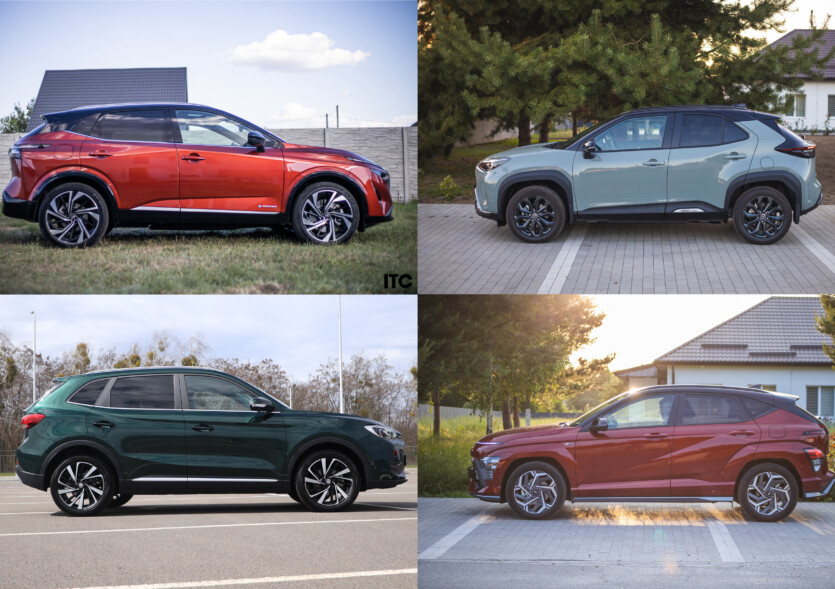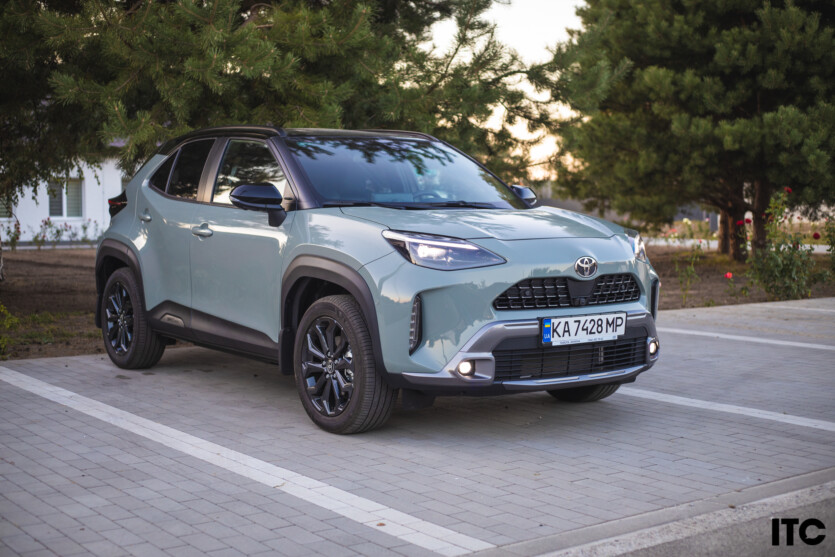
Electrification is developing by leaps and bounds around the world. We have already gotten used to it and started to understand new electric and hybrid technologies. The most interesting question of practicality always arises when we have to choose for ourselves. And now I will tell you my unpopular, but well-grounded opinion.
The main types of hybrids on the market today are mild hybrid (MHEV), full hybrid (HEV), and plug-in hybrid (PHEV). For simplicity’s sake, we’ve collected the cheapest full hybrid cars for this ranking, which are most relevant to us. Mild hybrids are ineffective in our country because they work mainly to reduce emissions. Rechargeable hybrids are also of little relevance because they have a short range on electricity, and subsequently lose their efficiency and effectiveness if the battery is discharged, and they cost much more.
Content
7. Jeep Avenger
Engine: 1.2 (gasoline) 100 hp 205 Nm
Electric motor: 21 kW (29 hp) 55 Nm
Battery capacity: Li-ion 0.9 kWh
Transmission: 6AT
Acceleration 0-100 km/h: 11 с
Fuel consumption l per 100 km: 5.1-7.5
Price: from 1 093 900 UAH
The newest and smallest representative in the brand’s history is offered to us only in electrified versions: electric and hybrid. Fortunately, the hybrid system is quite clever and has an original design unlike any other. It works like a conventional hybrid without charging and long driving on electricity. Only in a rolling motion, and even then, not for long. It’s good that even at speed it can roll on electricity. The battery is small and located under the driver’s seat.
6. Ford Kuga HEV
Engine: 2.5 liters (180/92 kW)
Electric motor: 125 hp (92 kW)
Battery capacity: Li-ion 1.1 kWh
Transmission: e-CVT
Acceleration 0-100 km/h: 9 с
Fuel consumption in liters per 100 km: 5.1-5,4
Price: 1 849 176 UAH
This crossover is a new representative of hybrids in Ukraine and has not yet gained popularity, but it is still worth paying attention to. The Ford Kuga HEV offers a wide range of units with a fairly decent price and various configurations. It is full of modern technologies and has a better interior, a restrained design, and an economical hybrid system. And we will definitely tell you more about it in our reviews.
5. Nissan Qashqai e-Power
Engine: 1.5 liters (158 hp / 116 kW)
Electric motor: 190 hp (140 kW) and 330 Nm
Battery capacity: Li-ion 2.1 kWh
Box: –
Acceleration 0-100 km/h: 7,9 с
Fuel consumption l per 100 km: 5.1-5.3
Price: 1 541 840 UAH
This iconic crossover once set the standard and still remains an example of SUV success, and in terms of the hybrid system, it can still serve as an example. The proprietary e-Power works to maximize environmental friendliness, so the gasoline engine only powers the electric motor and battery, which in turn turn the wheels. A perfect system with perfect balance. It has all the advantages of an electric car and is completely free of their disadvantages. Instant acceleration, silent rolling motion, efficiency, low emissions. The brand’s reputation also works in its favor.
4. Toyota Yaris Cross
Engine: 1.5 liters (130 hp / 82 kW)
Electric motor: 59 kW
Battery capacity: Li-ion 0.7 kWh
Transmission: eCVT
Acceleration 0-100 km/h: 10,7 с
Fuel consumption in liters per 100 km: 4,3
Price: from 1 088 780 UAH
Only the lazy have not heard of Toyota’s hybrid system. Nowadays, HEV versions are offered in almost every model of the brand. This is a parallel hybrid, when both an electric motor and a conventional internal combustion engine can turn the wheels. The latest generation of this system has brought a more powerful battery and improved settings, which means greater efficiency. Cars can run on electricity longer and provide more power at the start. We cite the example of the Toyota Yaris Cross because it is a good example of the quality, comfort, and practicality that Toyota can offer today. The CH-R or RAV4 can be safely included here.
3. MG ZS Hybrid
Engine: 1.5 liters (102 hp / 75 kW) and 128 Nm
Electric motor: 136 hp (100 kW)
Battery capacity: Li-NMC 1.83 kWh
Transmission: 3 speed hybrid FWT
Acceleration 0-100 km/h: 8,7 с
Fuel consumption l per 100 km: 5.2-5.9
Price: from 1 079 374 UAH
This novelty from the Chinese with a British residence permit has already made a splash on the Ukrainian market, but in fact, the MG ZS Hybrid does not promise any technical breakthroughs. This is a modern and well-thought-out hybrid system that is based on the same components, but with a slightly more complex program. It allows the system to operate both as a parallel hybrid and as a series hybrid due to the generator and the location of the main units.
We have already discussed in more detail told We will tell you more about it during the test drive. The system performs its main function perfectly. It gives you the feeling of an electric car with no charging problems. And most importantly, it is the most affordable hybrid on the market.
2. Honda ZR-V e-HEV
Engine: 2.0 l (143 hp / 105 kW)
Electric motor: 184 hp (135 kW)
Battery capacity: Li-ion 1.05 kWh
Transmission: e-CVT
Acceleration 0-100 km/h: 7.8 с
Fuel consumption in liters per 100 km: 5.1-5.7
Price: from 1 480 000 UAH
No one has yet beaten Honda’s hybrid transmission. No one else has such a simple yet effective technology. There are complex designs and attempts to achieve maximum efficiency everywhere, and the ZR-V is still the only one among competitors who is able to drive on electricity even at a speed of 120 km/h. I checked it personally.
It combines the full efficiency of an electric vehicle with its instant acceleration and maximum electric range with the efficiency of a gasoline engine that runs on the Atkinson cycle and powers an electric motor or battery. In the new generation, it is also capable of turning the wheels on its own sometimes, which was achieved by integrating two gears. So the efficiency has improved even further.
1. Hyundai Kona Hybrid
Engine: 1.6 l GDI (144 hp / 103.7 kW)
Electric motor: 42 hp (31 kW)
Battery capacity: Li-ion polymer 1.56 kWh
Box: 6AT
Acceleration 0-100 km/h: 10,9 с
Fuel consumption l per 100 km: 4.1-4.7
Price: from 1 338 200 UAH
The third generation of the Korean crossover is capable of surprising. It combines space at the expense of increased dimensions and wheelbase, quality materials and ergonomics with a fairly reliable and efficient hybrid system. Of course, they are almost brothers with the Kia Niro, but for some reason, Hyundai manages to be more economical and hip. And so far, among all hybrid systems, it is Kona that offers the lowest fuel consumption, even on the highway, where it shows a record 4.9 liters.
This is most likely due to the model’s focus on practicality, economy, and efficiency. It will not give driving emotions, but is aimed at comfortable and unhurried driving. In most cases, this is enough. Therefore, it can be considered the best offer in the price/quality/practicality category.
Comparative table
| Model | Type of hybrid | The power of the hybrid system | Fuel consumption (WLTP) | Price in Ukraine |
| Toyota Yaris Cross Hybrid | FHEV | 1.5 liters + electric motor ≈ 116 hp. | 3.4-4.3 l/100 km | from ~1 061 280 ₴ |
| Nissan Qashqai (e‑Power) | HEV (e‑Power) | 1.5 liter generator + 190 hp electric motor. | 5.2-7.0 l/100 km | from ~1 507 740 ₴ |
| MG ZS Hybrid | HEV | 1.5 liters + electric motor ≈ 194 hp. | ~4.3 l/100 km | ≈ 813 630 ₴ |
| Hyundai Kona Hybrid | HEV | 1.6 liters + electric motor ≈ 141 hp. | 5.0 l/100 km | ≈ 1 358 000 ₴ |
| Ford Kuga HEV | HEV (e‑CVT) | 2.5 liters + electric motor ≈ 190 hp. | 5.4-6.4 l/100 km | ≈ 1 300–1 500 000 ₴ |
| Honda ZR‑V e:HEV | HEV | 2.0 l + electric motor | 3.6-13.6 l/100 km | 1,800 000–2,000 000 ₴ |
| Jeep Avenger e‑Hybrid | HEV | 1.2 liters + 100 hp electric motor. | 4.9-5.1 l/100 km | from ~1 061 400 ₴ |








Spelling error report
The following text will be sent to our editors: